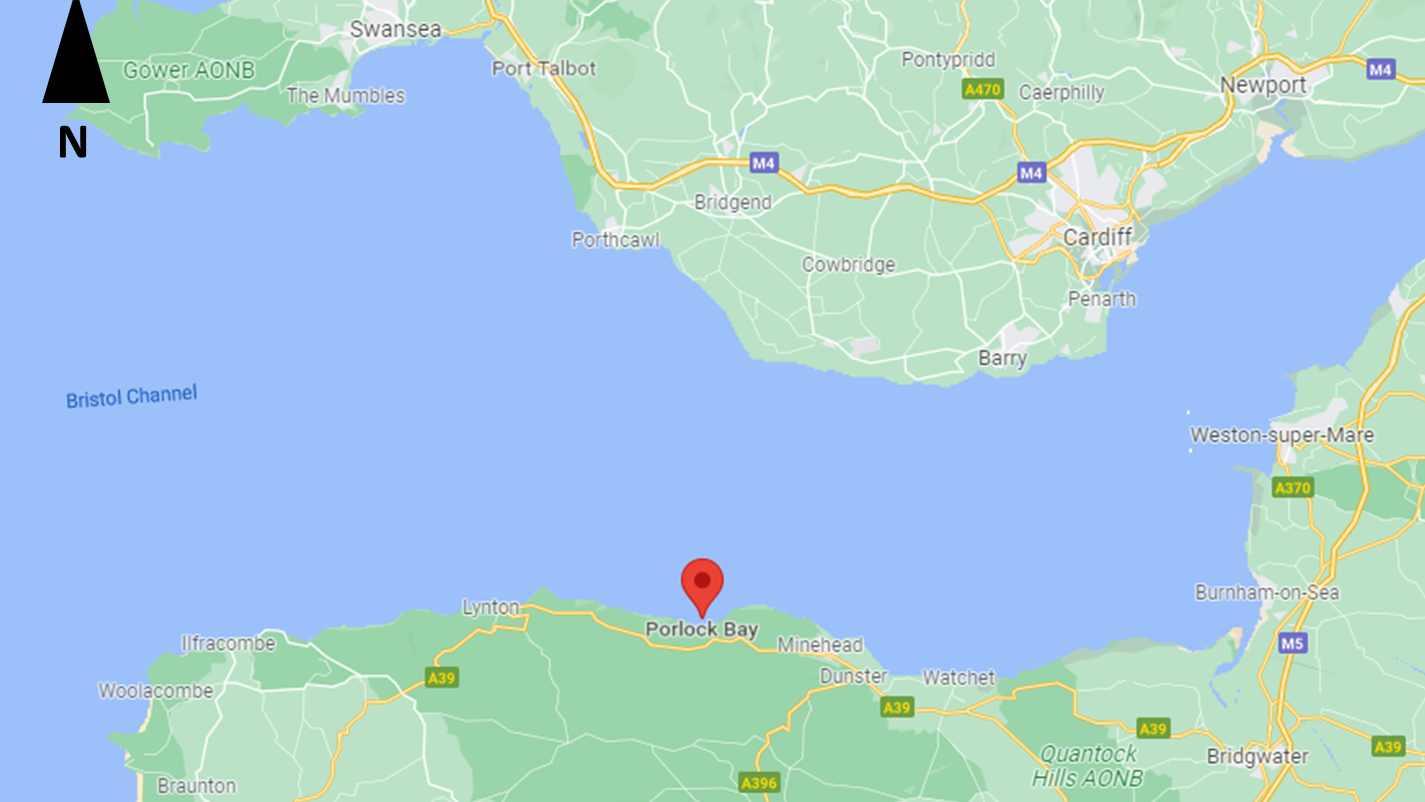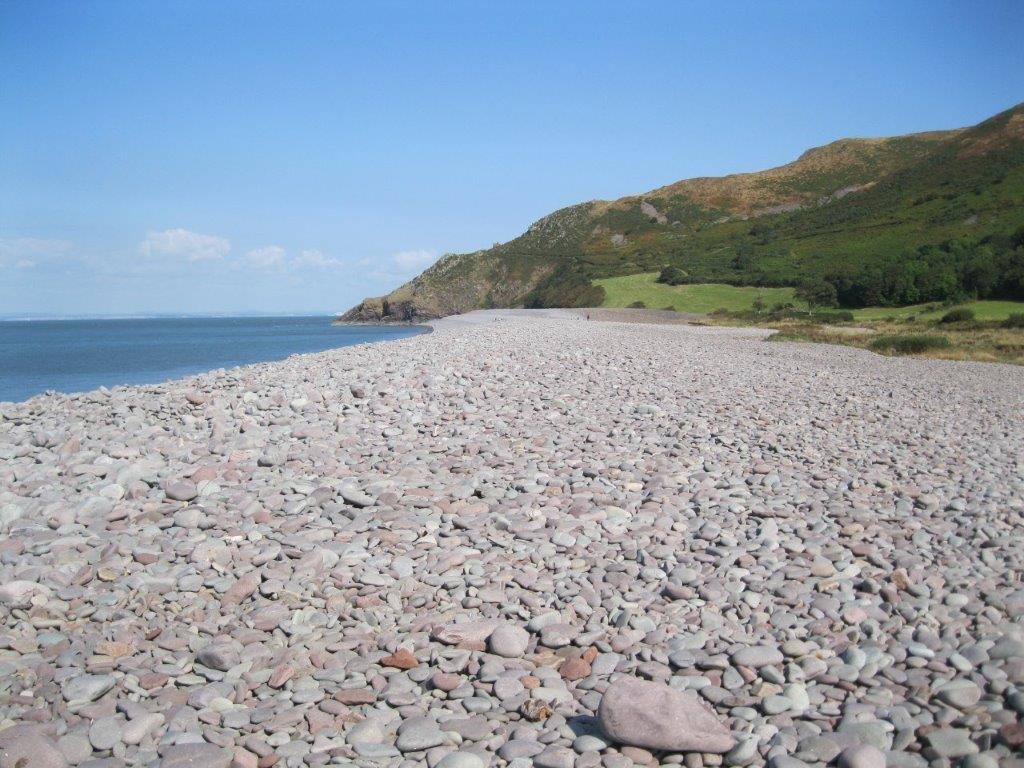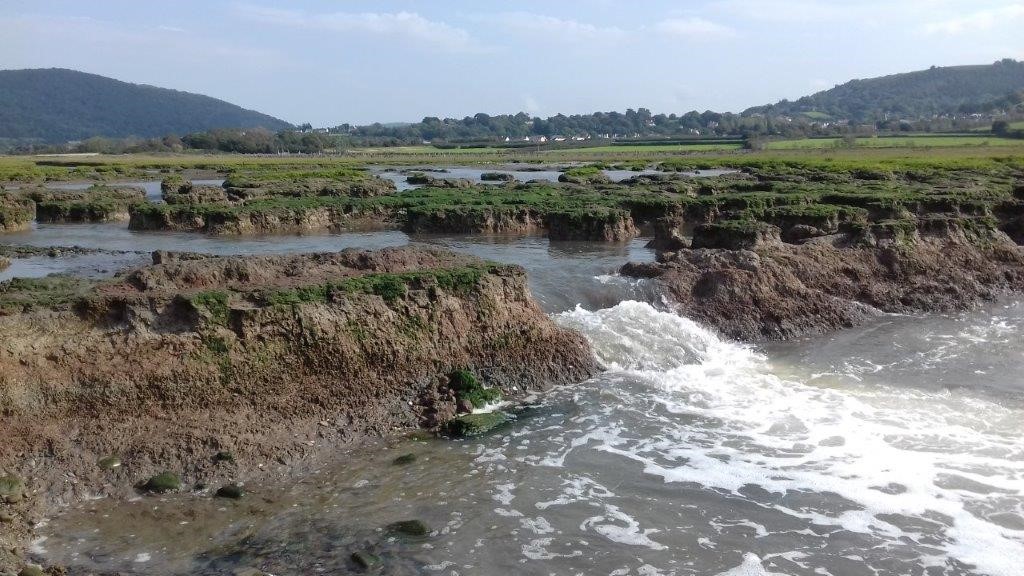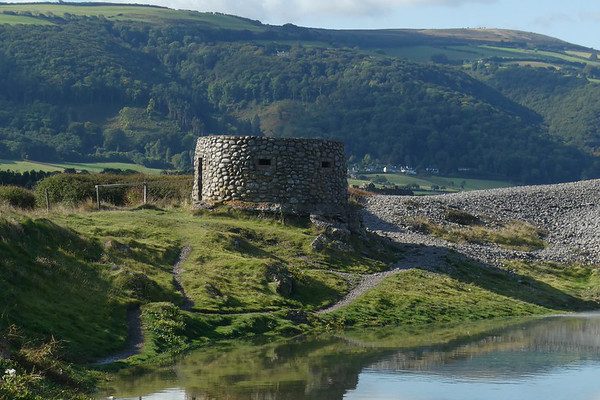Bossington Beach, Porlock Bay, Somerset – A history
Bossington Beach, Porlock Bay, Somerset – a history
Written by Peter Dlugiewicz, local resident and beach cleaner.
Find out more about Bossington Beach and its fascinating past in this blog post written by Peter Dlugiewicz, who has been carrying out beach cleans in the area since 1988. Peter explores the history of Porlock Bay and some of its notable events, as well as giving his own perspective on marine plastic pollution, changes and trends over time from his 34 years of beach cleaning.

Bossington Beach, Porlock Bay is a long, curving pebble beach running from Hurlestone Point to beyond the small harbour at Porlock Weir, a distance of approximately 4500 metres. It has good climate, as noted in Kubla Khan, being relatively sheltered. The marsh land behind most of the beach was once famed for the quality of the barley grown there due to wonderful soil. Part of this land was used for housing, but in modern times until the beach was breached by Storm Lili in 1996, it was used for cattle and sheep grazing. The breach was not repaired, and a good deal of this land has reverted to saltmarsh with natural re-wilding bringing back both fish and much birdlife.

Marked on the Ordnance Survey map is a submarine forest once said to stretch from Worm’s Head in the Gower. Porlock’s initial wealth appears to have come from the herring industry, and this continued into the 18th century. The herrings were salted, as were cod and congers eels often caught using spaniels on the spring tide.
It is said that 3 oyster dredgers were based at Porlock Weir, worked by the Perkins family who apparently knew a rich bed off the Exmoor coast. The oysters were kept in perches (see below). Perkins also had sailing ships which traded abroad with one, ‘Flying Foam’ being torpedoed in 1917. The harbour requires constant attention as the shingle shifts, especially after heavy storms. In the 20th century bulldozers were used to restore the beach. This work will still be needed to safeguard the houses at Porlock Weir yet the breach of 1996, which pushed the beach back some 90m, did not affect the village and was not repaired. This same storm also meant the loss of a memorial to American airmen who crashed there during the Second World War. A Second World War pillbox remains on the beach whilst behind it are the ruins of lime kilns.

The beach is still being moved further inland and anyone who knows it will have seen how it constantly changes. This means that remnants of past life sometimes resurface with, for instance, auroch bones being found. They were extinct in Europe in 1627.
One of the most famous and celebrated events occurred in 1899 when a ship in distress, during a severe gale, led to Lynmouth volunteers dragging their RNLI lifeboat overnight, on a road that rises to 1000ft in places, for 10 hours and 13 miles to launch in aid of a vessel in distress in the Bay. All in all, they went for 36 hours without sleep and rescued all 16 men.
Less celebrated are the deer hunts which sometimes ended with the hinds swimming out to sea for protection. Legend has it that one once swam all the way to the Welsh Coast.

The land today belongs to the National Trust and the Porlock Manor Estate but, whilst the Trust will take away the rubbish I collect, the Manor Estate have no contact details. When I started cleaning the beach in 1988 there were sewage outflows into the bay. These were stopped in the late 1990s, although there is still an emergency overflow at Porlock Weir. The works led to a huge decrease in the number of cotton buds, sanitary towels, wet wipes, etc. on the beach. The concrete remains of the outflows are now being slowly broken up by the sea yet remain an eyesore. However, the amount of litter, whilst now kept ‘under control’ by a clean every three months, remains high. I would estimate that, on average, I collect 800-900 items over a length of 1000 metres. It was once as high as 3000 items over the same length yet much of that may have been historic as I am unsure if any real cleans occurred before. Another environmental improvement has been the stopping up of the track which runs to the beach from Bossington village as it means there is no vehicular access for visitors, many of whom left their rubbish behind.
Sadly, the environment is still abused with the mess from overnight beach parties becoming more common. Items cleared have included car wheels and tyres, large ships ropes, and a fridge but for the most part it is plastic, of all forms, and fishing gear. The amount of waste coming down the estuary is a disgrace with the rivers flowing through Bristol, Newport and Cardiff being a major source although much also comes from further up the Severn as can be seen when walking along it. When the second Severn Crossing was being constructed a lot of readily identifiable waste came from the site, including helmets and cones.
If you are interested in being featured on the SEP website, please get in touch – severn@cardiff.ac.uk. We would love to hear from local people from all around the estuary on what makes their local patch special.
 Severn Estuary Partnership
Severn Estuary Partnership